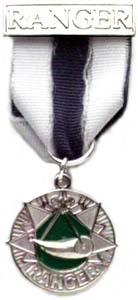These requirements were effective until May 31, 2014.
To see the current requirements, Click here.
- Explain the characteristics of each of the three distinct American riding styles.
- For your preferred style (one of three styles in 1), explain the equipment you would use, including parts of the saddle and bridle.
- Explain the difference in natural versus artificial aids used in communicating with your horse, such as use of hands, legs, weight, voice, whips, crops, martingales, bits, and auxiliary reins.
-
- Present yourself properly attired for the riding style you prefer.
- Explain the clothing and safety equipment a rider must have for your preferred style of riding.
-
- Demonstrate how to properly catch, bridle, and saddle a horse.
- Demonstrate and explain at least three steps in proper mounting and two ways of dismounting.
-
- Show how to test your correct stirrup length while you are dismounted and when you are mounted.
- Explain short stirrup length, medium stirrup length, long stirrup length, and why stirrup length is important.
-
- Explain and demonstrate the correct position of your body, feet, hands, arms, and legs while mounted.
- Demonstrate how all parts of your body should be positioned on your horse during a trot, a canter, and a gallop and explain why this is important.
- Demonstrate by using a pattern that you have control of your horse. On command, be able to slow down, speed up, stop, back up and be able to move your horse through its gaits.
-
- Properly remove tack from your horse and store it.
- Demonstrate proper care of your tack after riding.
- Demonstrate proper care for your horse after a ride, including cool down, brushing, and watering and feeding, and explain why each of these steps is important.
- Make a tabletop display or presentation on what you have learned about horsemanship for your crew, another crew, a Cub Scout or Boy Scout group, or another group.
Above information from Ranger Handbook (No. 33494), 2009 printing.








